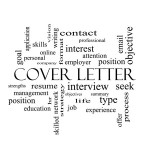
Widgetized Section
Go to Admin » Appearance » Widgets » and move Gabfire Widget: Social into that MastheadOverlay zone
The Write Stuff – Better Business Writing
20 ways to make your business correspondence more professional
 Before you spend an hour composing a cover letter, spend ten minutes reading through this section. These tips are designed to help you improve your written communication. And better business writing should help you market yourself and your business better.
Before you spend an hour composing a cover letter, spend ten minutes reading through this section. These tips are designed to help you improve your written communication. And better business writing should help you market yourself and your business better.
Sending business correspondence with errors is unprofessional behavior. Unfortunately, people do it all the time. You would be amazed the number of writers responding to editorial positions with misspelled words in their cover letter.
Remember, all business writing is a sales tool. Represent yourself in the best possible light.
Top Ten Proofreading Tips
- Read through the document several times, one time check for spelling, the next time check punctuation, etc.
- Read your copy backwards, read the pages out of order, check copy upside down.
- Take a break from your writing before sending it out, at least one hour, one day if possible
- Always mark your place before stopping.
- Double-check the beginnings of pages, paragraphs, sections, page numbers, headings, etc.
- Triple-check the copy around errors, mistakes tend to cluster.
- Check that typeface remains the same.
- Be especially careful with numbers and totals, check calculations and how numbers line up.
- Double-check referenced material (for example see following page) copy may move with revisions.
- Check the overall look and read of the document, grammar, etc.
Writing Style
While writing style is somewhat of an intangible, certain rules do apply. Remember, all business correspondence is a sales tool. A cover letter needs to make your resume stand out from the 100 others sitting on an employer’s desk.
- Document should look attractive: be presented in the proper format, quality paper, etc. Generally, white or ivory paper is considered the most appropriate for business.
- Sentences should not be too long or short. Avoid those sentances that go on and on forever.
- Writing should be clear and concise. The message should be clear to your reader. Have someone else read your documents. Do they understand what you’re trying to say?
- The letter should be organized logically, with smooth transitions between sentences.
- Your opening should capture the reader’s attention. Do try to stand out from the crowd. But, don’t be too hard sell or cutesy.
- Write your letter to your reader. A letter to a potential employer should be more formal than that to a business colleague.
- Keep the tone fresh, interesting and friendly. No out-dated, wordy phrases. You wouldn’t say “enclosed please find” or “as per” why write them?
- Be positive, use action words. Do say “I am . . .” Don’t say “I believe I am . . . “
- Change each letter, if only slightly. Don’t fall into the easy trap of letting your letters sound like form letters.
- Proofread. Proofread. Proofread. Your letter must be free of errors: no typos, no incorrect spelling, good grammar, etc.







You must be logged in to post a comment Login